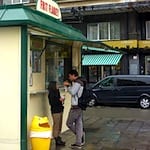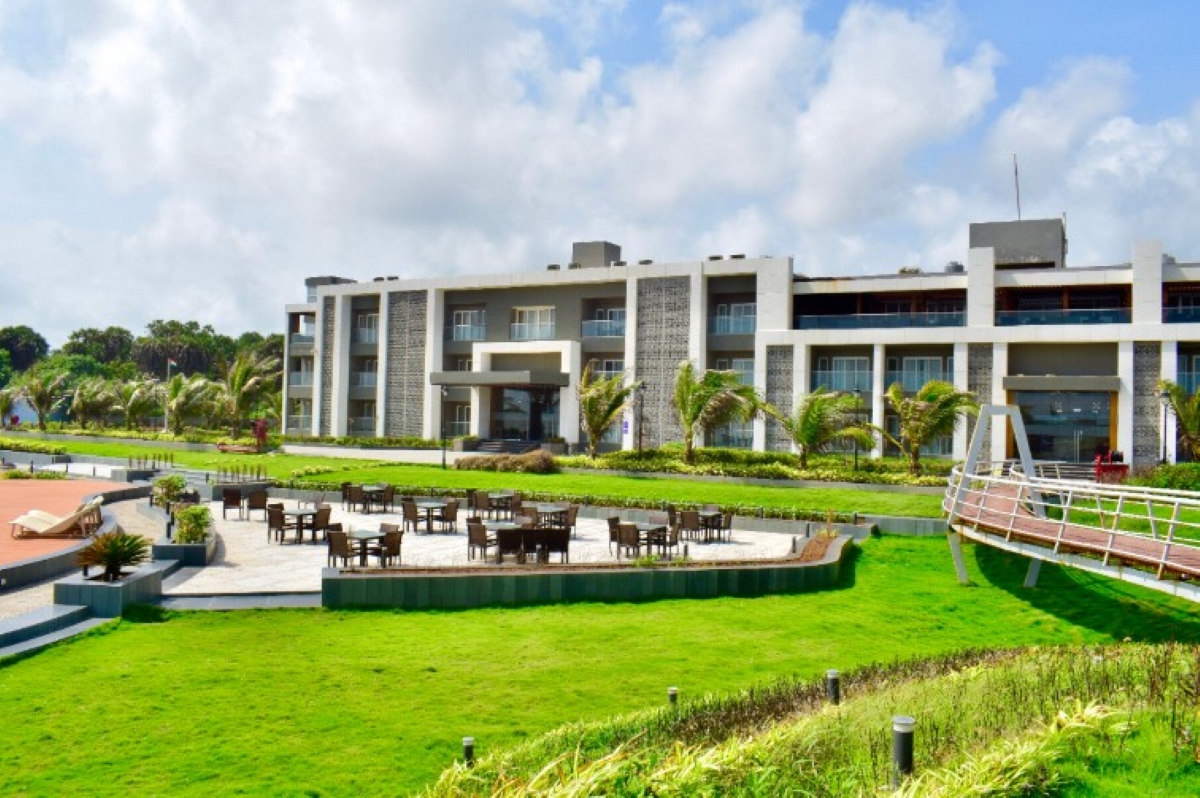Will this man find the best frites in Belgium?

Skift Take
I am on the gourmet “Tram Experience”, a restaurant that trundles around the south-eastern suburbs of Brussels serving exquisite menus devised by a selection of Belgium’s top chefs – at €75 (£60) a head. But the discussion with my new-found Belgian companions on the table beside me, and our waiter, has turned to frites (chips). Where, we want to know, is the best fritkot (chip stand) in Brussels?
Several names are weighed up and chewed over before the head waiter, in his immaculate white uniform, arrives from the driver’s end of the tram, irresistibly drawn to the conversation. No, he declares, it’s definitely the fritkot in the place Saint-Josse. But he’s out of date: that one, the fritkot of the famous Martin Aspers, Chez Martin, was universally acclaimed to be the best in Brussels, but he retired, and it closed, in 2009. Since then there has been a hot debate about who should take his place on the podium. It remains unresolved. “You see,” confided a fellow diner, delicately spearing some calzone of wild salmon with his fork, “frites in Belgium are a passion!”
So what makes good Belgian chips incontestably the best in the world, and which fritkot is the best in the city? Part of the answer to the first question is in the potato. Bintje is the variety usually cited. Floury but also flavoursome and slightly sweet, Bintje potatoes stand up perfectly to the key secret of Belgian chips: double frying.
But before that, they must be peeled and hand-cut into sticks that are just the right size – about the girth of a lady’s finger, if somewhat longer. Meanwhile the oil should be on the heat, reaching about 160C/320F. This should not really be oil, but fat: beef dripping (graisse de boeuf). The chips are fried once until pale but cooked through, then left to drain and cool (tiédir). Then they are refried at 175C (347F) until golden and bien croustillantes – crispy.
All the best fritkots follow these rules, although these days they buy in pre-cut chips – fresh (not frozen), delivered daily, and discarded at the end of that day if not used. They double fry them in 100 per cent beef fat, which is changed regularly. But the end result depends critically upon how the alchemy is performed. Much can go wrong in the process, producing either perfection or cruel disappointment: pale, flavourless, floppy or undercooked chips, with an unpleasant aftertaste.
Traditionally, frites are served piping hot in a card or paper cone with a large dollop of mayonnaise on top. It’s a meal in itself, but you can add any of the customary meat products, such as sausage-like fricandelles and cervelas, boulettes (meatballs), brochettes, s ate, hamburgers, hot dogs – and often a carbonnade (a sweet beef stew cooked in beer). Instead of mayonnaise you can choose any of a dozen or so sauces: cocktail, pili-pili (chilli), tartare, garlic – you name it. Fritkots also serve soft drinks and beer, and sometimes wine. All in all, you can dine out, sitting on a bench, for about €7 (£5.60).
Where to buy them
According to the organisers of the year-long festival of food called Brusselicious 2012 (of which the Tram Experience is part), the best fritkots in Brussels are not in the centre. The Brusselicious “Fritkots Walk” is not a walk at all, as all 10 of the recommended fritkots are spread widely around and outside the city centre, like the numbers on a clock.
The fritkots have effectively followed the money. The well-to-do of Brussels live in the suburbs, and that’s where the fritkots can earn their keep. For tourists, the most convenient on the list are in the districts of Saint-Gilles and Ixelles close to the Horta Museum and Art Nouveau walks, and another in the EU area, close to the museums in the Parc du Cinquantenaire. But I don’t entirely agree. I rate at least two city-centre fritkots highly. Below is my guide to five of Brussels’s best and most conveniently located fritkots.
Five top fritkots
Top comes Frit Flagey in place Eugène Flagey, Ixelles. When place Flagey was revamped recently, its fritkot was threatened with extinction, but saved by a public petition: this, after all, was the fritkot immortalised by the great Jacques Brel in his song "Madeleine." Thierry van Geyt is now in charge, and he does his work with pride and diligence. I would give him a perfect score: the gold standard by which all others can be measured. (10/10)
In the city centre, the fritkots in the place de la Chapelle, at the top of the folksy Marolles district, and just below the picturesque place du Grand Sablon serves frites well above average. (8/10)
If you don’t wish to stray much beyond the Grand Place, Friterie Tabora at 2 rue Tabora claims to use traditional methods, and has 42 years of frying experience. (7/10)
In the western district of Saint-Gilles, is the highly rated fritkot of the Barrière de Saint-Gilles (it’s actually in the avenue du Parc). Nothing very glamorous here – jammed up against a wall on a busy street and next to bins and a bus stop. Frites: good, but I was not wholly convinced. (7/10)
The famous Maison Antoine in the middle of place Jourdan, across the Parc Léopold from the European Parliament, was established in 1948, and has evolved into a kind of chalet serving a wide variety of meal-sized snacks.
I am not alone in thinking that the frites here fall well short of the Belgian ideal. But it is a popular location, in part because neighbouring bars allow clients of Maison Antoine to bring along their chips to drink with their beer – look for signs saying “Partenaire de la Maison Antoine — frites acceptées”. (6/10) ![]()





